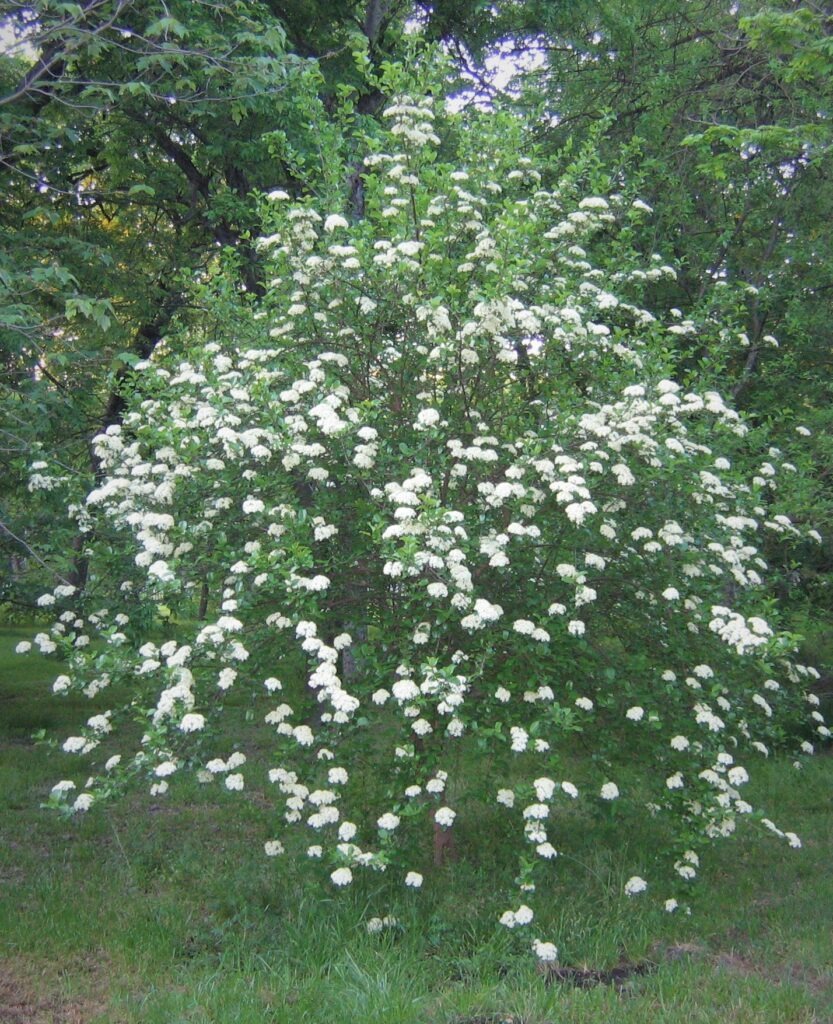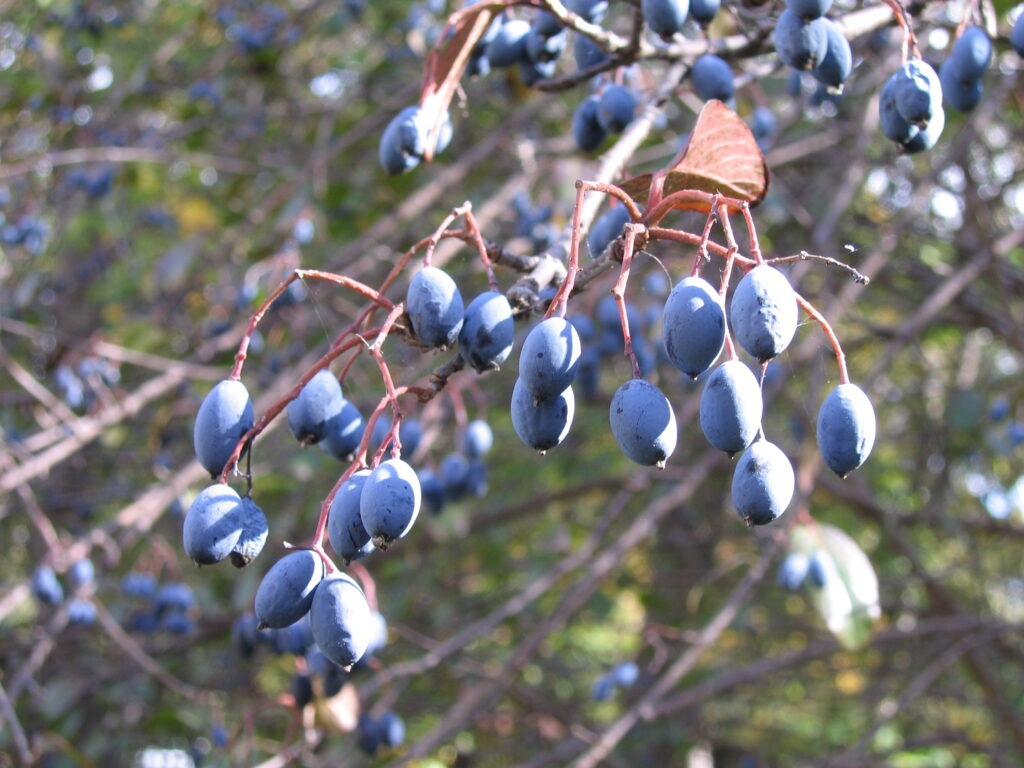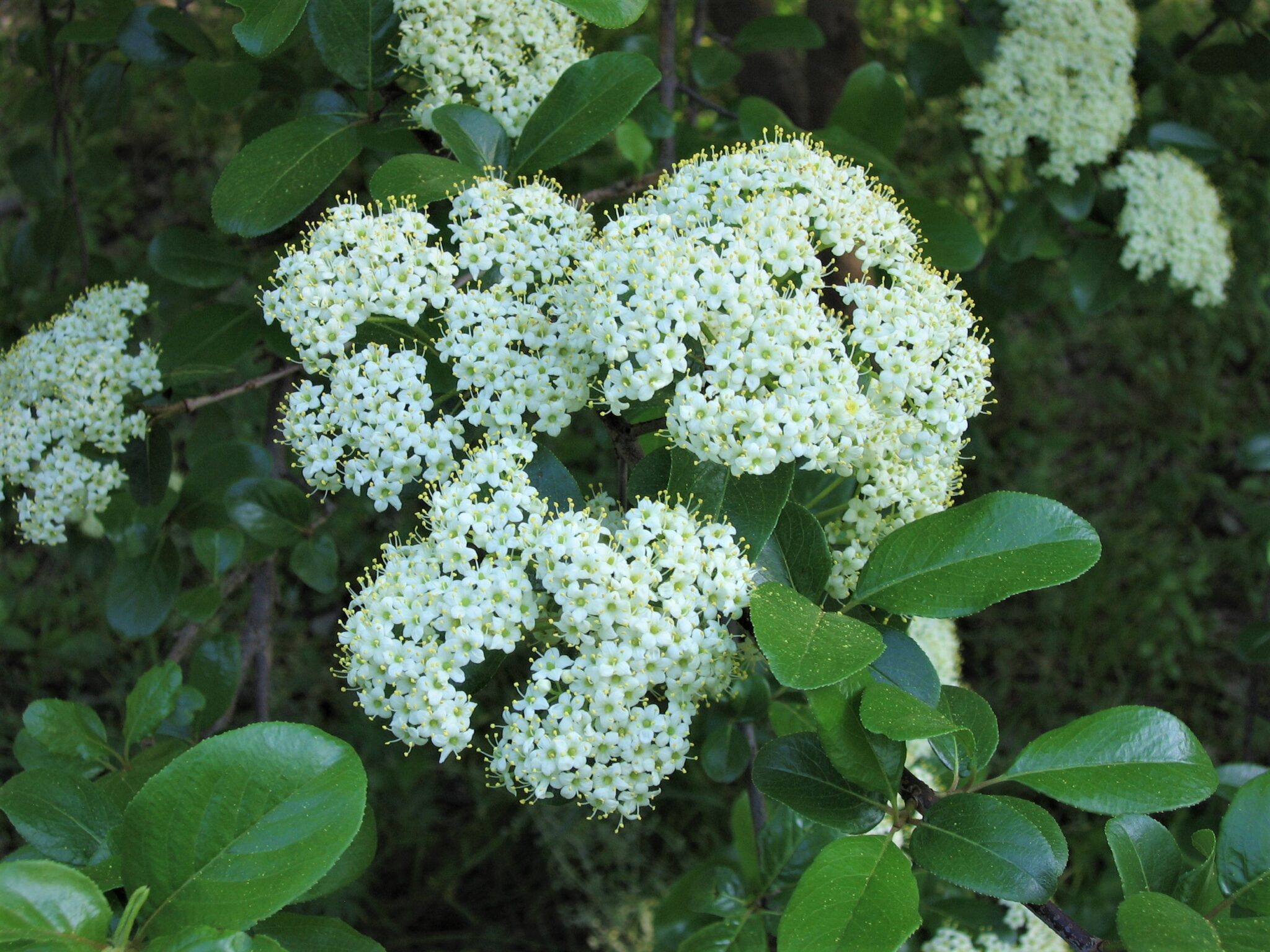
Let’s face it: “rusty blackhaw viburnum” does not summon a mental image of an attractive plant. It sounds dull and brown and decrepit, not the characteristics most people prize in an ornamental tree.
This makes Senior Horticulturist Steve Huddleston’s description of the plant all the more surprising. “What one word describes rusty blackhaw viburnum? Spectacular,” he says.
Rusty blackhaw viburnum (Viburnum rufidulum) grows as either a small tree or large shrub, usually reaching 12 to 20 feet tall. Native from east to central Texas, its name actually points to some of its most interesting features.
The plant leafs out in the spring with bright green, shiny leaves on stems covered with fine, rust-colored hairs–hence the name “rusty.”
In spring, showy, four-inch-wide clusters of white flowers 1/4- to 3/8-inch wide cover the tree. They are succeeded by half-inch-long, apricot-colored fruits. In the fall, as they ripen, these fruits turn a bluish-gray. Such fruits are sometimes known as “haws,” an old English word for berries–hence “blackhaw.” (This meaning of “haw” appears in other plant names such as “hawthorn” and “possum haw holly.”)
So much for the name. How is this plant spectacular?
“It adds something special to the landscape every season of the year,” says Huddleston.
In the summer, the leaves of rusty blackhaw virburnum turn dark green with a lustrous shine. “The leaves can be so glossy that they almost look as if they were dipped in shellac,” says Huddleston.
Come fall, the leaves turn brilliant hues of red, mauve and orange. After the leaves drop, the tree’s bark takes the stage. It separates into dark, rectangular plates and offers a wonderful textural quality to the landscape.

April is typically when rusty blackhaw virburum puts on its best show. The clusters of white blooms stand out against the dark green leaves.
To see a rusty blackhaw for yourself, you can find the plant several places, including east of the Rock Springs Building on Old Garden Road, by the restroom in the Tinsley Garden, northeast of the Garden Clubs of Texas, Inc., building and in several other locations on the grounds.
If you want to add this tree to your landscape, the best time to plant will be in late fall. Rusty blackhaw viburnum grows well in full sun to dappled shade in a range of soils, including sand, loam, clay, and limestone–as long as the soil is well drained. The tree is slow-growing and will need extra water for the first two years after planting. Once established, it has low water requirements and tolerates both dry soil and high heat.
Because rusty blackhaw viburnum grows well in dappled shade, it makes an excellent understory tree beneath the canopy of larger trees such as oaks and cedar elms. This native viburnum makes an ideal courtyard or patio tree; it even functions well in a large bed that wraps around the corner of a house where it will have a softening effect on the corner.
The tree is a favorite of bees and butterflies in the spring and of birds and mammals in the summer–they seem to love the fruits.
Shakespeare said, “A rose by any other name would smell as sweet.” The Bard was right: rusty blackhaw viburnum proves that beautiful plants can have less-than-attractive names.







